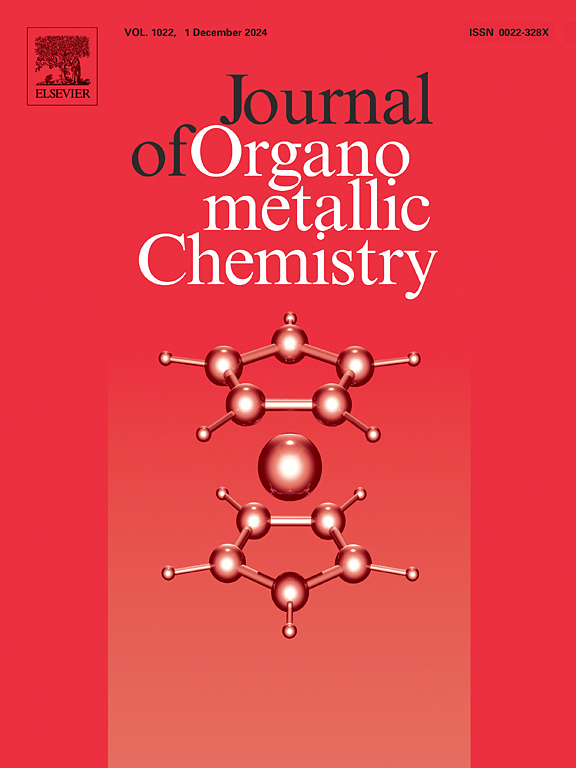Decoration of palladium nanoparticles over Thymus pannonicus extract modified magnetic nanoparticles: synthesis, characterization and evaluation of its catalytic performance in the synthesis of 5-Substituted-1H-tetrazoles
IF 2.1
3区 化学
Q3 CHEMISTRY, INORGANIC & NUCLEAR
引用次数: 0
Abstract
This research outlines a novel core-shell structure of Fe3O4 nanoparticles supported by Palladium nanoparticles using Thymus pannonicus extract. Various instrumental techniques, such as FE-SEM, elemental mapping, TEM, EDX, XRD, and ICP-OES, were utilized to assess the morphological and physicochemical characteristics of the produced Fe3O4@T. pannonicus/Pd NPs material. The desired catalyst was utilized to efficiently synthesize 5-substituted-1H-tetrazoles from haloarenes, achieving good yields and allowing for a straightforward extraction process. In this procedure, a novel and recyclable Fe3O4@T. pannonicus/Pd NPs catalyst facilitated the reaction of diverse iodo- and bromo- benzenes with K4[Fe(CN)6], serving as a safe source of cyanide to promote the [2 + 3] cycloaddition of the resultant aryl nitriles with NaN3 in an in-situ single-pot process to produce 5-substituted-1H-tetrazoles. The durability of the catalyst was confirmed through leaching tests, hot filtration, and reusability assessments over 7 consecutive cycles.

pannonicus提取物修饰磁性纳米粒子修饰钯纳米粒子:合成、表征及其在5-取代1h -四唑合成中的催化性能评价
本研究概述了一种新型的核壳结构的Fe3O4纳米粒子负载钯纳米粒子胸腺草提取物。利用FE-SEM、元素映射、TEM、EDX、XRD、ICP-OES等多种仪器技术对制备的Fe3O4@T进行了形态和物理化学表征。pannonicus/Pd NPs材料。该催化剂用于卤化芳烃高效合成5-取代1h -四唑,收率高,萃取工艺简单。在这个过程中,一种新颖的可回收Fe3O4@T。pannonicus/Pd NPs催化剂促进了多种碘苯和溴苯与K4[Fe(CN)6]的反应,作为安全的氰化物来源,促进了合成的芳腈与NaN3在原位单锅工艺中[2 + 3]环加成,生成5-取代1h -四唑。通过连续7个循环的浸出试验、热过滤和重复使用评估,证实了催化剂的耐久性。
本文章由计算机程序翻译,如有差异,请以英文原文为准。
求助全文
约1分钟内获得全文
求助全文
来源期刊

Journal of Organometallic Chemistry
化学-无机化学与核化学
CiteScore
4.40
自引率
8.70%
发文量
221
审稿时长
36 days
期刊介绍:
The Journal of Organometallic Chemistry targets original papers dealing with theoretical aspects, structural chemistry, synthesis, physical and chemical properties (including reaction mechanisms), and practical applications of organometallic compounds.
Organometallic compounds are defined as compounds that contain metal - carbon bonds. The term metal includes all alkali and alkaline earth metals, all transition metals and the lanthanides and actinides in the Periodic Table. Metalloids including the elements in Group 13 and the heavier members of the Groups 14 - 16 are also included. The term chemistry includes syntheses, characterizations and reaction chemistry of all such compounds. Research reports based on use of organometallic complexes in bioorganometallic chemistry, medicine, material sciences, homogeneous catalysis and energy conversion are also welcome.
The scope of the journal has been enlarged to encompass important research on organometallic complexes in bioorganometallic chemistry and material sciences, and of heavier main group elements in organometallic chemistry. The journal also publishes review articles, short communications and notes.
 求助内容:
求助内容: 应助结果提醒方式:
应助结果提醒方式:


